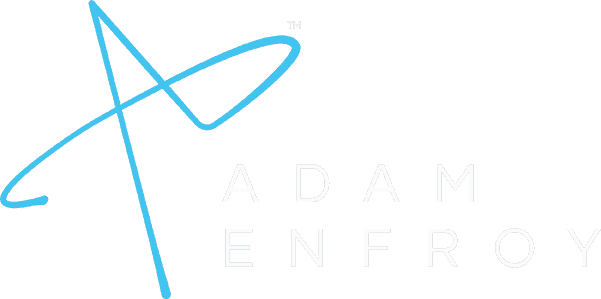How To Create An Effective Blog Post Outline in 2024 (Rank Faster)
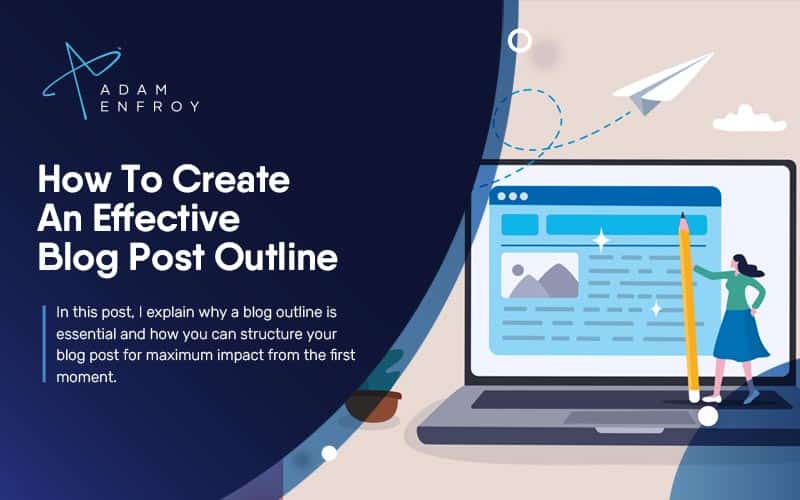
You might think, “Outlining? Isn’t that the yawn-inducing stuff they made us do in school?”
Absolutely!
But, much like broccoli and power naps, those nerdy teachers were onto something.
Writing a blog post without an outline is like assembling an IKEA bookshelf without a manual.
Sure, you could dive right in, get lost among the bizarrely-named parts, have a meltdown, and end up with something vaguely resembling modern art instead of a bookshelf.
Or, you could follow the instructions and build a sturdy structure in half the time, with minimal tantrums and no leftover screws.
By having a solid outline before you start writing, you enjoy the thrill of the journey while ensuring your content doesn’t end up in a rickety, off-kilter mess.
In this post, I’ll explain why an outline is essential and how you can structure your blog post for maximum impact.
- Why You Should Have A Blog Post Outline
- How To Create A Killer Blog Post
- Writing An Effective Blog Post
- Crafting A Compelling Angle
- Enhancing The User Experience
- Utilizing SEO Practices In Your Blog Post
- Incorporating Social Media Strategy In Blogging
- Effectively Using Calls-to-Action (CTAs)
- Analyzing Blog Performance
- Wrap Up.
Why You Should Have A Blog Post Outline
Here are a few reasons why creating an outline can help you write more effectively.
Defines The Purpose
Before starting a blog, you should know what you aim to achieve with this project.
Similarly, a clear objective is essential before embarking on any writing project.
Blog outlines come in handy, as they help one define their purpose.
The outlining process provides a roadmap that guides your writing by helping you identify the information to include in your post.
Additionally, this tool can help you stay focused on the main message and keep your narrative on track.
Saves Time And Effort
Creating a blog outline can save you time and effort in the long run.
Organizing your thoughts beforehand avoids the risk of your post becoming disjointed or lacking coherence.
An outline also helps speed up the writing process by providing a structure to follow when developing your post.
It reduces frustration and helps you manage your time more efficiently.
Provides Clarity And Focus
Blog outlines help you to clarify your ideas and focus on your topic.
They provide a clear structure that guides you through the writing process and ensures you don’t miss any critical points.
An outline ensures that your post has a natural flow, is easy to read, and makes logical sense.
It optimizes your potential to engage and captivate your readers.
Facilitates Collaboration
A blog outline can facilitate collaboration, ensure consistency, and make editing more productive if you’re writing with co-authors or editors.
Everyone involved can refer to the same outline, ensuring everyone is on the same page and working towards the same goal.
Increases Creativity
Paradoxically, a blog outline may increase your creative freedom.
By defining your purpose and main ideas, you can become more creative in presenting those ideas.
A step-by-step outline also helps you brainstorm and try innovative blog ideas to meet and exceed your reader’s expectations.
How To Create A Killer Blog Post
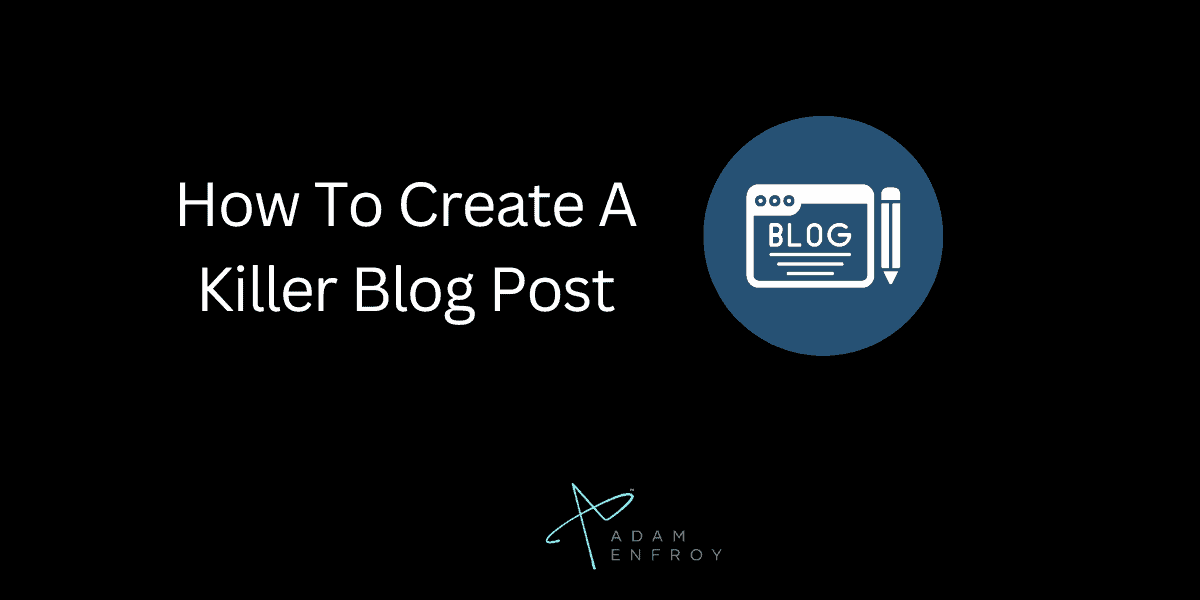
Let’s now get into how to outline your content with the five W’s and a unique perspective to ensure that your blog post is informative, engaging, and well-structured.
Get Specific With The Five W’s
Try to cover only a few topics in one post.
Too many topics can make your content scattered and hard to read.
Instead, focus on one narrow topic and break it down using the five W’s – who, what, when, where, and why.
Then, approach the topic from various angles and clarify why your readers should care about your topic.
For instance, if you want to write about healthy eating, start by asking yourself:
- Who are my readers, and what do they care about?
- What health benefits do healthy foods have, and how do they help our bodies?
- When should we eat healthy, and how frequently should we consume these foods?
- Where can we find healthy food options, and how can we source them sustainably?
- Why is healthy eating important, and what are the consequences of a poor diet?
Find Your Unique Perspective
Once you have narrowed your topic, think about how to put your unique spin on it.
Your perspective sets you apart from other bloggers and helps you to stand out in a crowded space.
Consider what makes you different, what your experiences are, and how you can use them to relate to your readers.
By offering a unique perspective, you’re more likely to engage your readers and keep them interested.
Identify 3-5 Main Points
A great blog post should have a clear structure and flow that guides your readers from the intro to the conclusion.
Identify three to five main points supporting your unique perspective to achieve this.
These main points should relate to the five W’s and provide in-depth information to your readers.
Each key point should be a separate paragraph and structured logically, starting with an introduction, supporting evidence, and a conclusion.
Use Bullet Points For Sub-Points
Once you’ve identified your main points, include sub-points.
Bullet points are an excellent way to outline sub-points that support each of your main points.
They help break down information into digestible chunks, making it easy for your readers to follow.
When using bullet points, ensure they follow a consistent structure and formatting to maintain visual appeal and readability.
Review Your Outline
Lastly, before writing your blog post, review your outline to confirm that your main points and sub-points follow a logical progression supporting your unique perspective.
Ensure that you have addressed the five W’s and that your content flows well to make it easy for your readers to understand your topic.
Once satisfied with your outline, you can start drafting your blog post.
Writing An Effective Blog Post
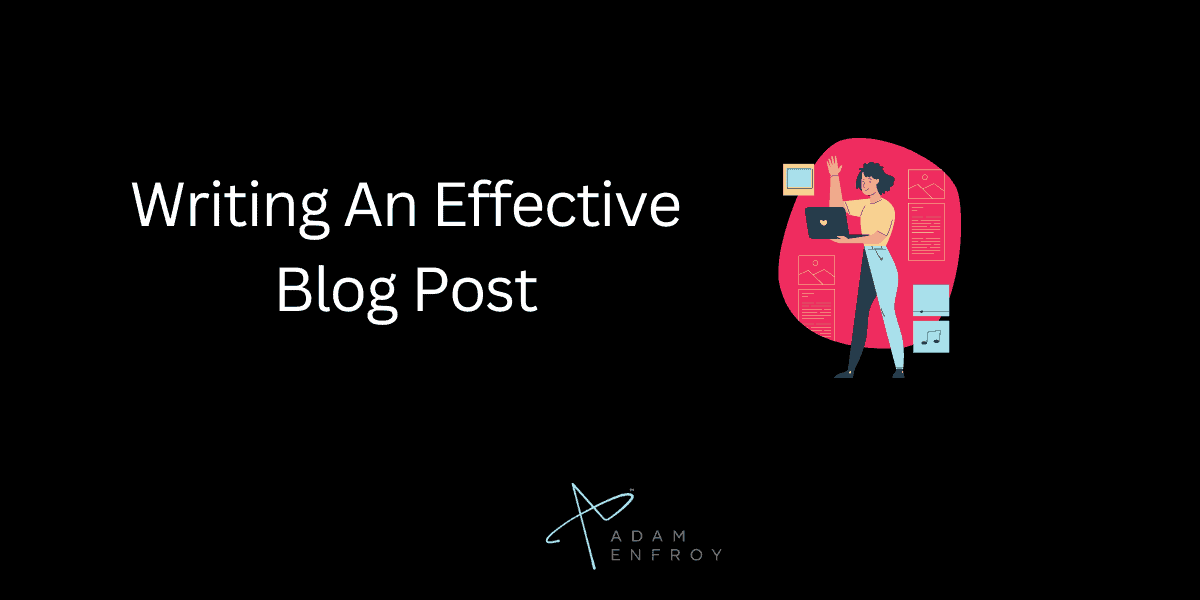
Whether you are a seasoned blogger or a newbie, the following section will help you create an effective blog post.
Introduction
The introduction is the first thing your readers will read, and it’s your chance to grab their attention.
It should provide a brief overview of your blog post and why they should read it.
Here are the three sub-points of the introduction:
- Start with a hook: Use a shocking statistic, a relatable story, or a thought-provoking question to grab your readers’ attention.
- Define your topic: Clearly explain your blog post and what your readers can expect to learn from it.
- Explain why it matters: Let your readers know why your topic is important and how it can benefit them.
Three Key Ideas
The body of your blog post is where you provide the details and insights related to your topic.
Ideally, include at least three key ideas that can help you structure your content organization coherently.
Here are the three sub-points of each key idea:
- Key Idea 1: Provide background information
- Sub-point 1: Give an overview of the topic and provide some historical context if relevant.
- Sub-point 2: Include some statistics or research findings to support your argument.
- Sub-point 3: Explain how your topic is relevant to your readers.
- Key Idea 2: Offer actionable tips
- Sub-point 1: Provide practical tips or advice that your readers can implement in their lives.
- Sub-point 2: Use examples or case studies to illustrate your points.
- Sub-point 3: Address possible objections or challenges that your readers may face.
- Key Idea 3: Present a unique perspective
- Sub-point 1: Share your own experiences or point of view on the topic.
- Sub-point 2: Analyze different perspectives or opinions on the topic.
- Sub-point 3: Offer a new angle or fresh insights your readers may not have considered.
Conclusion
The conclusion is the last chance to leave a lasting impression on your readers.
It should summarize your main points and provide a closing thought or call to action.
Here are the three sub-points of the conclusion:
- Summarize your key ideas: Recap the main points of your blog post concisely and compellingly.
- Provide a closing thought: End your blog post with a memorable quote, a personal reflection, or a thought-provoking question.
- Call-to-action: Encourage your readers to take action, whether it’s subscribing to your newsletter, leaving a comment, or sharing your post on social media.
Crafting A Compelling Angle
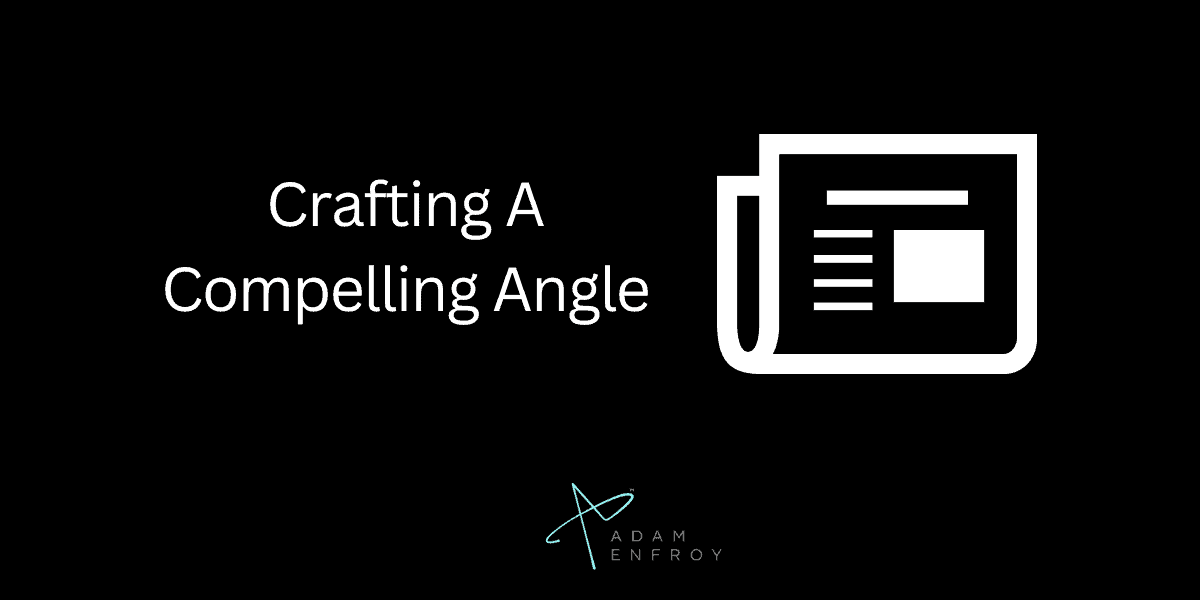
One of the best ways to craft a compelling angle is by tapping into your personal experiences and expertise.
This strategy works well when writing about a topic you’re passionate about or have experience in.
For instance, if you’re a fitness enthusiast and want to write about the benefits of yoga, draw from your own experience to create a compelling angle that resonates with your readers.
Sharing your experiences with yoga and how it has transformed your life will make your entire article more relatable and engaging.
Another strategy for crafting a compelling angle is to crowd-source opinions.
It works well when writing about a hotly debated or controversial topic.
For instance, if you’re writing about the legalization of marijuana, you may want to gather opinions from people on both sides of the debate to create a comprehensive article that explores the issue from different perspectives.
Such an approach helps you create informative, balanced, and engaging content.
Taking a contrarian approach is another effective way of crafting a compelling angle.
The approach works well when writing about a commonly accepted topic or with a standard narrative.
For instance, if you’re writing about the benefits of social media, you should take a contrarian approach and explore the dark side of social media.
It’ll help you create thought-provoking, engaging, and unique content.
Enhancing The User Experience
You don’t want to take the time to write an outline only for it to fail.
By following these steps and reviewing and revising your outline, you can ensure your blog is well-written and effectively communicate your message.
When it comes to user experience, these next tips will help you to make your blog even more effective.
Choose A Strong Title And Subheading
A strong title is the first thing your reader will see in your final post.
Thus, a compelling one is a must.
Start by zeroing in on your target keywords and craft a great title around them.
It should be descriptive and catchy enough to make the reader want to keep reading.
Give them an idea about what they can expect from the article.
Also, be mindful of your header tags and subheadings.
Use them to create structure and offer more insight into the idea you’re exploring.
Use Visuals To Make An Impression
People tend to engage more with content that has visuals.
It’s crucial to weave visual elements throughout your article.
Featured images or videos at the top of your article can grab the reader’s attention and make a lasting impression.
Be sure to caption your images with relevant and descriptive text to make them both enjoyable and informative.
Incorporate Internal Links And Keywords
An excellent practice in article writing is using internal links related to other blog posts.
Take the time to look for keywords and phrases that you can include in your article and link them to other related content.
It helps keep the reader on your site and increases engagement time.
Additionally, weave in your target keywords throughout the blog post.
Sprinkle them in to create better blog posts, but be careful not to use them too much, as this could flag your article as spam.
Cite External Research And Case Studies
A lot of writing involves research and reading about your subject matter.
As a blogger, you ought to have done your research as well.
Thus, it’s imperative to incorporate external links, including research, case studies, and credible sources.
Adding this context and depth to the article can establish your credibility as an authority and validate your content.
Personalize With Author’s Bio
Personalization goes a long way in establishing a connection with your readers.
Add a personal touch to your article by incorporating an author bio at the end, which can help make your writing more relatable.
You can include brief information about yourself, what inspired you to write the article or other relevant details.
It’s an excellent opportunity to establish your authority, give readers a glimpse of who you are, and generate new followers.
Utilizing SEO Practices In Your Blog Post
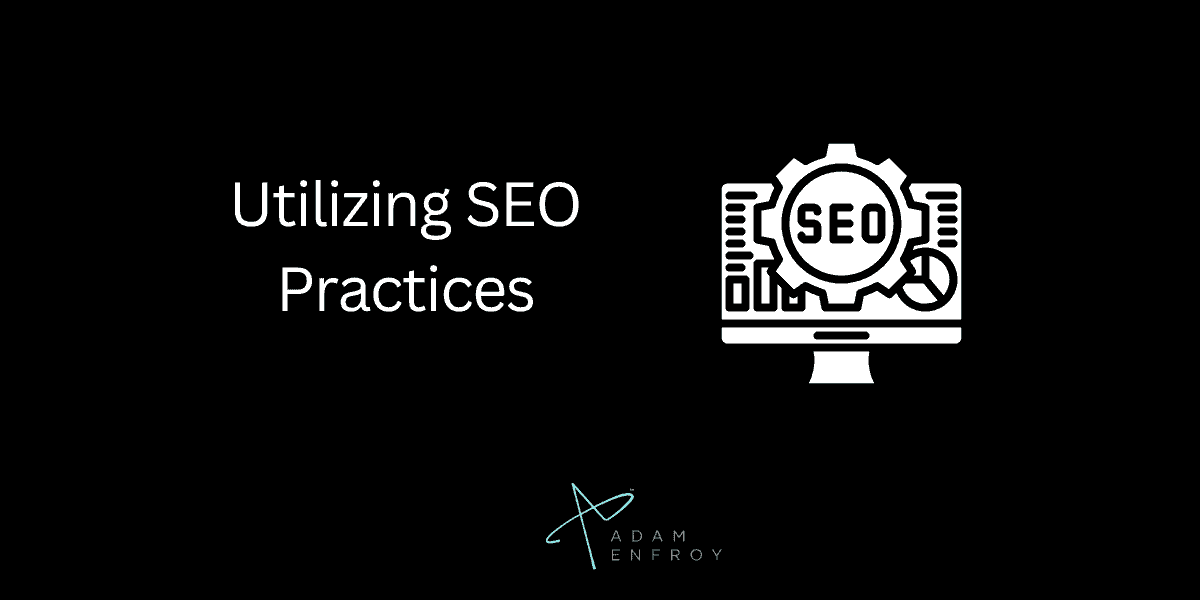
Utilizing SEO practices in your blog post can enhance your online presence and make your content more discoverable to search engines.
To start, understand SEO basics, such as keyword research and optimization.
When choosing a blog topic, consider what keywords people are typing into search engines related to your subject matter.
Then incorporate these keywords into your blog content and post title for better visibility.
Another critical point to remember is to write SEO-friendly headlines and meta descriptions.
These are the first things people see when your blog post appears in a search engine, so making them stand out is essential.
Incorporating ALT text in your images can enhance your search engine optimization, ensuring your photos are discoverable through search engines and providing additional context to your content.
As you write a blog post, consider using a blog post outline template or a blog outline template to structure your content.
It allows your post to have a clear structure and flows well.
A working title or an article outline helps keep your content focused.
Finally, don’t forget about the power of visual content, such as infographics.
These can be a great way to enhance your blog post and make it more engaging to readers.
And if you are using a platform like WordPress, many SEO plugins can further enhance your content’s discoverability.
Incorporating these SEO practices into your blog post can significantly improve your online presence and make your content more discoverable to search engines.
By understanding the basics of SEO and utilizing these key points, you can create blog posts that provide value to your readers and reach a larger audience.
Incorporating Social Media Strategy In Blogging
Another key to successful blogging is incorporating a social media strategy, which involves creating shareable content and using social media widgets to reach a wider audience.
In addition, actively promoting your blog on social media channels and engaging with your audience are crucial steps in building your online presence.
When writing a blog post, use a blog post outline template to structure your content and ensure your target audience remains engaged.
Remember that blog content should be relevant to your readers’ interests and address their pain points.
Remember that blog writing is both an art and a science, so hone your skills through regular content creation and experimentation with different blog topics and formats.
Don’t underestimate the power of an actual post on WordPress; it can make all the difference in attracting readers and improving your SEO rankings.
For your next blog post, consider these factors and create an excellent post that will provide value to your readers and keep them coming back for more.
Effectively Using Calls-to-Action (CTAs)
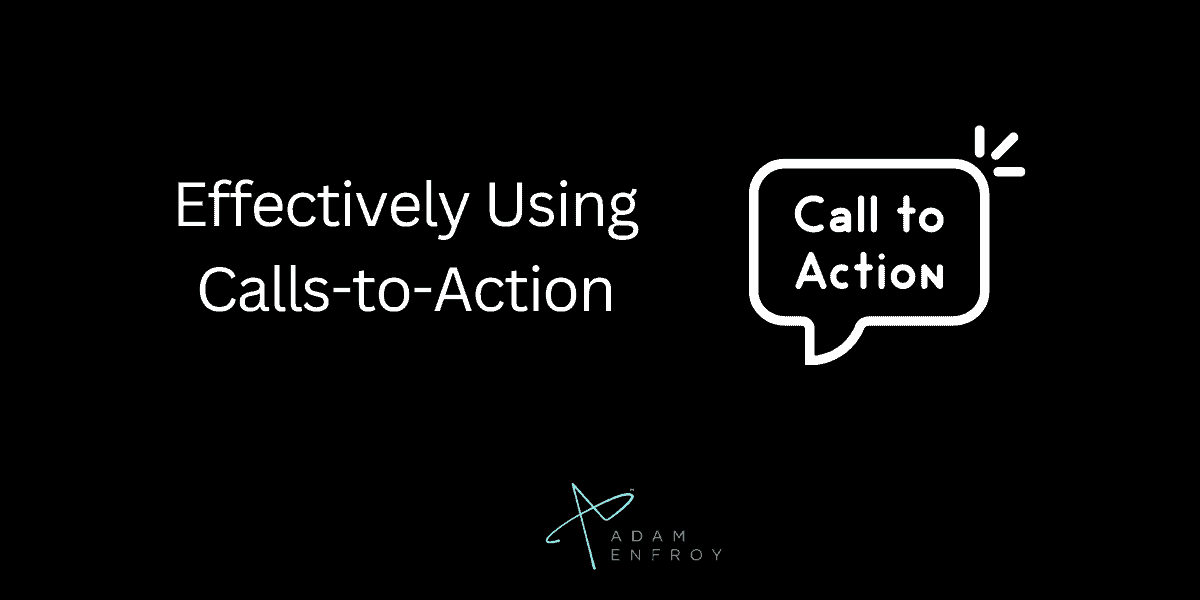
When creating effective blog content, one of the most critical components of your marketing strategy is incorporating strong calls-to-action (CTAs).
In the opening paragraph of your post, you should establish the purpose of your piece of content and let your readers know what they can expect to learn by reading on.
Then, as you move into the meat of your post, incorporate CTAs throughout, using a step-by-step process that guides your reader toward clear takeaways and actionable advice.
Crafting compelling CTA text is vital to engaging your readers with your post.
Consider using action-oriented language like “Download Now” or “Try it Today” to create a sense of urgency and encourage readers to take action.
Testing and adjusting your CTAs can also help refine your approach and drive better results.
To power up your blog post outline template, utilize various types of CTAs throughout your post.
These might include inline text links, banner ads, or pop-ups – whatever it takes to grab your readers’ attention and keep them engaged with your content.
Analyzing Blog Performance
When it comes to analyzing blog performance, there are several crucial factors that every blogger should take into account.
First and foremost, it’s crucial to set up Google Analytics for your blog to track specific metrics and better understand your audience.
It includes monitoring traffic sources and understanding key performance indicators (KPIs) like bounce rates, engagement rates, and time spent on site.
Regularly reviewing and adjusting your marketing strategy is crucial to ensure you’re targeting the right audience and creating content that ranks high on search engines like Google.
To do this, consider factors like SEO, word count, top-ranking pages, and the time you spend creating content.
Considering these factors helps you create a more targeted and effective marketing strategy for your blog, regardless of whether you’re using WordPress or another platform.
Wrap Up.
Writer’s block, along with a blank page, can make beginners and more advanced bloggers feel frustrated.
As content marketing takes a lot of time to create, it’s essential to make sure you’re focusing on the right metrics and delivering content that offers value to your readers.
Preparing a content outline before you begin writing ensures all the items from your first draft to the final, long-form version of any post or page are organized and logical.
Moreover, as quality content becomes increasingly competitive, staying on top of the latest trends and best practices is essential.
By following these simple steps, you can make sure your blog content is always up to par with readers’ expectations.
Further reading on AdamEnfroy.com: As AI blogging becomes increasingly popular, there are specific considerations to consider when creating content.
Moreover, here’s a post on how to make money blogging.
These articles are must-reads if you’re looking for tips and tricks that take your blog’s content to the next level.
